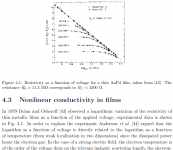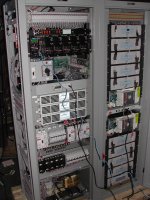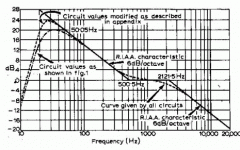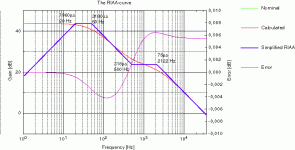I did and it remains wrong imo, second para, after which I can't read on. Whilst I agree that absolute frequency is unimportant - the pitch at which we tune is just a convention - this is not where the error is. The mistake is that the equate the effect of a clock running fast (which will increase pitch) with a small elevation of the temperature in the concert hall (which will not change pitch, 41 Hz conducted through warm air is the same as conducted through cold air, it just will arive a little sooner).
Hmm, yea... they must have been a bit "unlucky" when they wrote that part. Temp changes the "group delay" I suppose. But the rest is good.
//
I just looked at the pictures:
do you mind slowing down enough to answer:
Yes, but how many of you people actually looked seriously at George's contribution of "Electron-electron interactions..."? Get up to speed guys!
do you mind slowing down enough to answer:
why? are you now designing liquid He cooled MC preamps?
if you even skim the paper you will find an equation with abs temperature K^-3 dependency for an effect that is ~1-2% at 610 mK
what's 2%*500^-3 (hint: I had to change my 10 digit display calculator to engineering exponential mode)
Attachments
Last edited:
The telecom/cellular industry runs on well filtered SMPS from 250 watts to 100 kW at 24,48, 120, and 240 VDC. Output and input EMI conducted and radiated are both low and units are paralleled for redundancy and capacity. The pricing is too high for application in audio.
Here is a picture of the high end type of this type of product with internal AC transfer switch between 2 AC sources, an internal 30 kva dual electrostatically shielded front end transformer, 3 phase 6 kW switch mode rectifiers running in parallel with less than 1 watt of electrical noise, DC dual paralleled lithium ion 125 VDC batteries, paralleled 1 kva inverters, DC and AC distribution panel with SNMP and Web monitoring of all functions. It is one of the first industrial applications of large size lithium ion batteries in the U.S.
Here is a picture of the high end type of this type of product with internal AC transfer switch between 2 AC sources, an internal 30 kva dual electrostatically shielded front end transformer, 3 phase 6 kW switch mode rectifiers running in parallel with less than 1 watt of electrical noise, DC dual paralleled lithium ion 125 VDC batteries, paralleled 1 kva inverters, DC and AC distribution panel with SNMP and Web monitoring of all functions. It is one of the first industrial applications of large size lithium ion batteries in the U.S.
Attachments
Where's the beef?
Agree it remains wrong. To this, I am willing to offer a challenge.
Proof, where is the proof. I am willing to consider this when the total playing time from the cue sheet, the total published track time, the time on the playback display, and an actual atomic clock disagree by more than 1/100th of a second, and by this I'm using a 32nd (!) note recorded at the tempo of 240bpm for a measuring stick - which is wicked fast for a composition and usually only shows up on a percussion score for the snare drum. My old metronome only goes up 208 BPM.
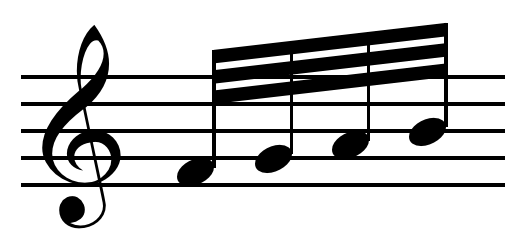
The likelihood of a credible sample with that level of tolerance means that a statistically significant variation with reproducible results is completely unexpected.
As a former brass player, I can agree that a rise in temperature can affect pitch. But this has nothing to do with playback tempo variance at this level of observation.
Let's look at how this could be heard, in real life. In an actual performance, say an outdoor marching band at an american Football game. (Yes, this is an absurd comparison) Everyone on marching on a football field, all 100 plus performers keep the same clock, i.e. tempo going in their head to stay on tempo being led by the conductor. Even with the natural variation from player to player yes tighter synchronization leads to a better final result but this is due to playback from multiple sources, in this case greater than 100.
In this case, our performer (an audio source e.g. FIFO) is only one performer being given instructions regulated by one tempo source (whatever frequency that might be) but from moment to moment a slight amount of error is still corrected in that moment and does not change the pitch (in part, I am willing to guess out loud because it does not reorder its output based on a variation of that much, and since I don't know how it works at the transistor level, I don't know if it even is capable of reacting to a change).
Case in point when you give a computer conflicting instructions, it stops working:

If you can "hear" a 32nd note's difference at 240 bpm, count yourselves one of the best ears of all time. Tchaikovsky, eat your heart out.
I did and it remains wrong imo, second para, after which I can't read on. Whilst I agree that absolute frequency is unimportant - the pitch at which we tune is just a convention - this is not where the error is. The mistake is that the equate the effect of a clock running fast (which will increase pitch) with a small elevation of the temperature in the concert hall (which will not change pitch, 41 Hz conducted through warm air is the same as conducted through cold air, it just will arive a little sooner).
Agree it remains wrong. To this, I am willing to offer a challenge.
Proof, where is the proof. I am willing to consider this when the total playing time from the cue sheet, the total published track time, the time on the playback display, and an actual atomic clock disagree by more than 1/100th of a second, and by this I'm using a 32nd (!) note recorded at the tempo of 240bpm for a measuring stick - which is wicked fast for a composition and usually only shows up on a percussion score for the snare drum. My old metronome only goes up 208 BPM.

The likelihood of a credible sample with that level of tolerance means that a statistically significant variation with reproducible results is completely unexpected.
As a former brass player, I can agree that a rise in temperature can affect pitch. But this has nothing to do with playback tempo variance at this level of observation.
Let's look at how this could be heard, in real life. In an actual performance, say an outdoor marching band at an american Football game. (Yes, this is an absurd comparison) Everyone on marching on a football field, all 100 plus performers keep the same clock, i.e. tempo going in their head to stay on tempo being led by the conductor. Even with the natural variation from player to player yes tighter synchronization leads to a better final result but this is due to playback from multiple sources, in this case greater than 100.
In this case, our performer (an audio source e.g. FIFO) is only one performer being given instructions regulated by one tempo source (whatever frequency that might be) but from moment to moment a slight amount of error is still corrected in that moment and does not change the pitch (in part, I am willing to guess out loud because it does not reorder its output based on a variation of that much, and since I don't know how it works at the transistor level, I don't know if it even is capable of reacting to a change).
Case in point when you give a computer conflicting instructions, it stops working:

If you can "hear" a 32nd note's difference at 240 bpm, count yourselves one of the best ears of all time. Tchaikovsky, eat your heart out.
Last edited:
I always put the boot to the peddle and the peddle to the metal and I always arrive much sooner.
-RNM
Dick did you mean pedal or is this some word play we non-native speakers don't get??
Jan
That's a pitch!If you can "hear" a 32nd note's difference at 240 bpm, count yourselves one of the best ears of all time. Tchaikovsky, eat your heart out.
... If all at this forum had this white paper as basis for understanding "jitter", life here would be a better place. ...
//
If that .pdf is acceptable as a white paper, then I am glad I didn't print it because I already have a similar supply of paper in my own home. I discarded some of it this morning it piecemeal without further concern of its utility, and am certain that tomorrow, the same thing will happen.

Dick did you mean pedal or is this some word play we non-native speakers don't get??
Jan
pedal works better. .
Last edited:
So my locally made trafo is in fact better than the ILP, right? 5-6 mA is 1/3 od 17 mA.
better for which situation..... might be the field radiated from the EI transformer is much greater... and if that causes more issues and shielding requirments.
-RNM
This recalls the short letter to the newspaper editor from Max Reger, who was displeased about the negative review of one of his recently-premiered pieces.If that .pdf is acceptable as a white paper, then I am glad I didn't print it because I already have a similar supply of paper in my own home. I discarded some of it this morning it piecemeal without further concern of its utility, and am certain that tomorrow, the same thing will happen.
It read:
I am sitting in the smallest room in the house. I have your review before me. Soon it will be behind me.
Last edited:
1/3 od 17 mA.
Likely has a couple more windings, lower magnetising current.
(compared to the no-load primary current level of a laminated transformer, a case of diminishing returns for a toroidal transformer manufacturer, economic decision)
As a former brass player, I can agree that a rise in temperature can affect pitch.
As much as a kick in the assets.
As a former brass player, I can agree that a rise in temperature can affect pitch.
As much as a kick in the assets.
Calculator change of pitch by temperature variation flute clarinet pipe organ calculate frequency tone pitch temperature woodwinds speed of sound speed amplitude flute tube level - sengpielaudio Sengpiel Berlin
So there..
Personally, I don't agree with electronically rolling off the bass of the phono preamp. It is best done with the 12dB resonance in the arm-cartridge (compliance) combination.
Personally, I don't agree with electronically rolling off the bass of the phono preamp. It is best done with the 12dB resonance in the arm-cartridge (compliance) combination.
Well, the vast majority of phono stages in SS equipment and receivers used a polar electrlytic cap in a couple coupling places to do the job.
For someone who had a newer high-end system.... maybe it can be eliminated..... with the SOTA turntable etc. But often you get something like this as a result:

THx-RNMarsh
George, I'm sure I've seen a review
Thank you elektroj. I had never seen this company’s products before.
This is the site of Fidelix (through Google Translate). The translation is lousy but nevertheless
https://translate.google.com/transl...8&u=http://www.fidelix.jp/&edit-text=&act=url
For line level amps where the current changes are small (compared to power amp), an output LC is fine...... however, if Zout of the supply matters to the circuit and/or dynamic conditions exist, a linear IC filter or reg or C multiplier works very well to maintain low output Z. Large currents thru an L (LC) filter increases the radiated field issue and thus shielding comes back into the picture.
Thank you Richard.
I haven’t tested a cap multiplier past the SMPS. I will try it
actually looked seriously
It’s not deja vu
Please take the time to study the necessary conditions that pertain to each mode discussed (dimensions, temperature and other confiners).
Most of these modes have a meaning only in the microscopic and mesoscopic scale and only under very restraining specific conditions.
George
- Status
- Not open for further replies.
- Home
- Member Areas
- The Lounge
- John Curl's Blowtorch preamplifier part II
